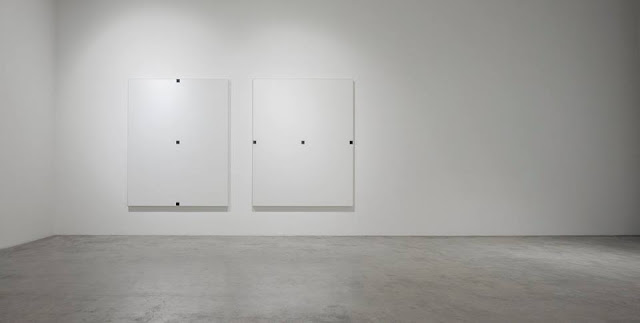LOZENGE
Five Walls Project Space
Footscray
 |
| Lozenge Fusil, 2018, Cloth Tape on multiple MDF panels, 240 x 360 cm. |
 |
| Lozenge Mascle, 2018, Cloth Tape on two MDF panels, 60 x 120 cm. |
 |
| Raymond Carter at Five Walls |
'From the first decade of the 20th Century, the lozenge shape has held a position within geometric abstract painting. Introduced to easel painting by the Russian Constructivists they incorporated it, alongside other elements, into their geometric arrangements. It was with the Minimalist painters of the late 1950/60’s that the rhombus leitmotif became central to the inquiry. Painters Frank Stella and Ellsworth Kelly, among others, found delight in the dynamics of the shape and applied it with great effect to determine the shape and compositions of their works...' Aaron Martin, 2018.
Through progressive development during his MFA study at the VCA, Melbourne, Raymond Carter abandoned more traditional media to construct work with humble materials including hardware store bought cloth tape and MDF boards. The tape I'm told is UV resistant and the surface is also UV protected with a final sealant. The effect is impressive, particularly Lozenge Fusil, 2018. I time-traveled back to the great Galleria Nazionale d'Arte Moderna in Rome where room upon room exists full of wonderful Arte Povera and 1960s Minimalist inspired contemporary works. Lozenge Mascle, 2018 is rewarding for its surface depth, the 'process' of layering tape adding another interesting dimension to the work. Carter initially trained as a sculptor and later worked in more traditional fine art media, particularly printmaking.






















